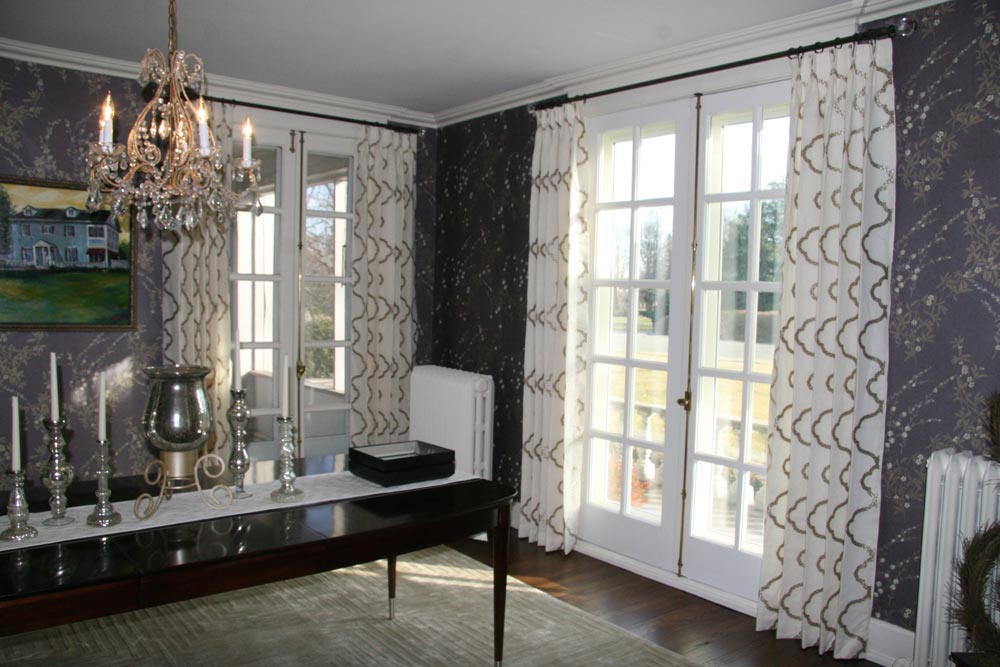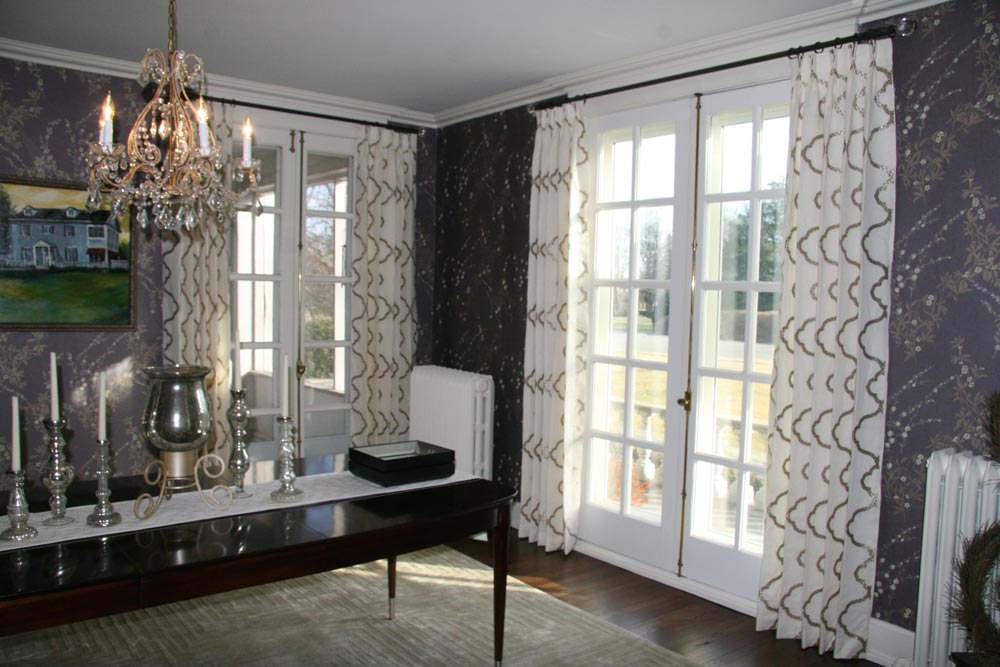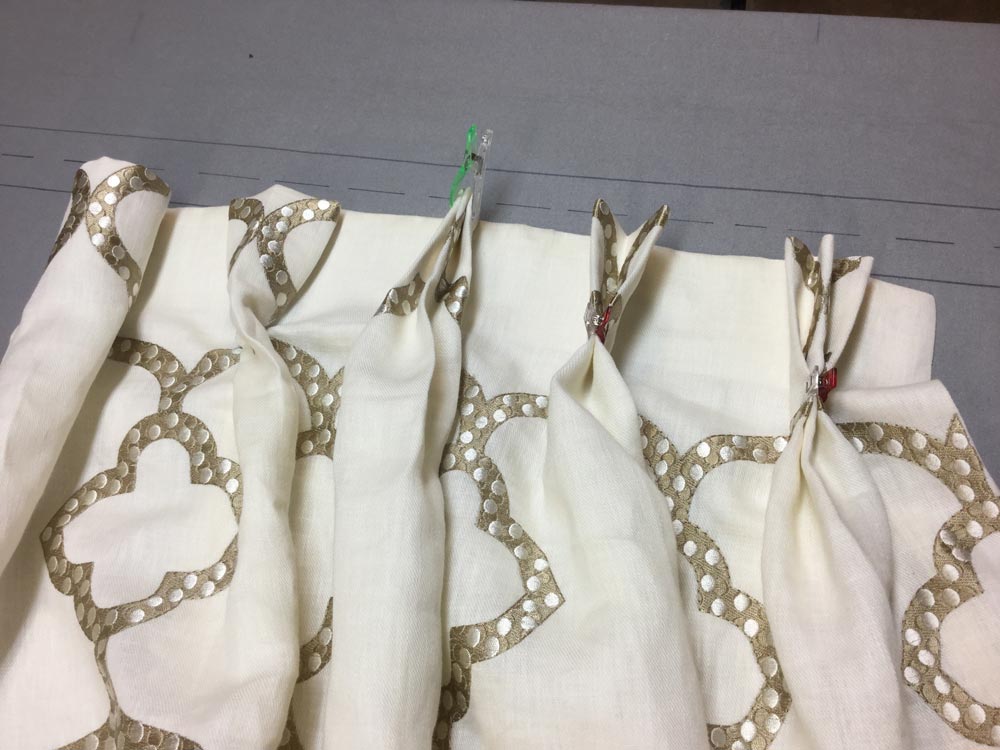Articles & Resources- old
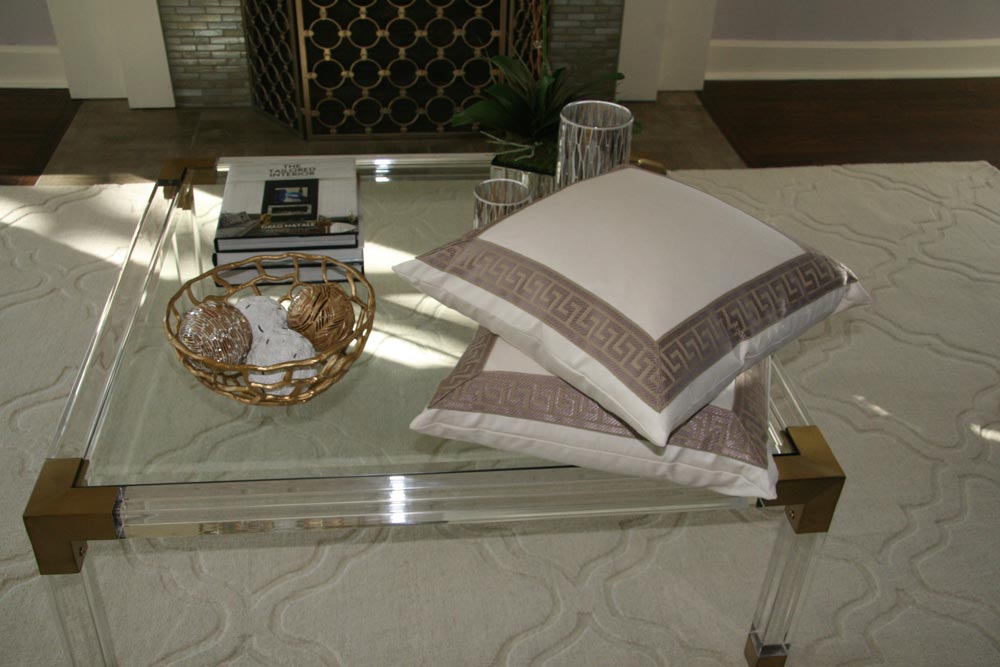
At Bridge, we’ve been adding tape trim to many projects. Greek key tape trim and twill tape have been very popular. We love the style these tapes add to our pillows and window treatments, so we thought we’d share a few of the projects with you.
Pillows with Greek Key Trim
Even a plain twill pillow is so much more interesting with Greek key trim. These 18″ pillows were embellished with khaki and lavender Greek key trim.
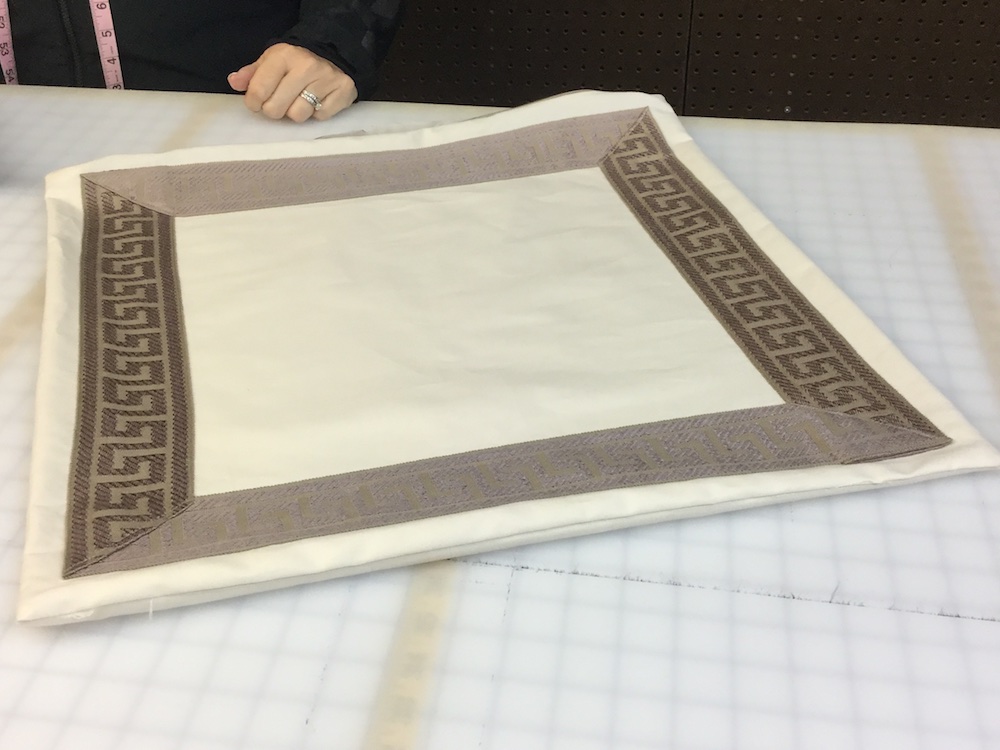
These pillows, made with Schumacher’s Bargello fabric, looked great with the addition of this khaki and cream Greek key trim.
Greek Key Design Using Twill Tape
In addition to using a Greek Key trim, you can create a Greek Key motif using twill tape. We used 2″ wide twill tape to embellish cream drapes and a coordinating upholstered cornice. Here’s a photo of the cornice before installation.
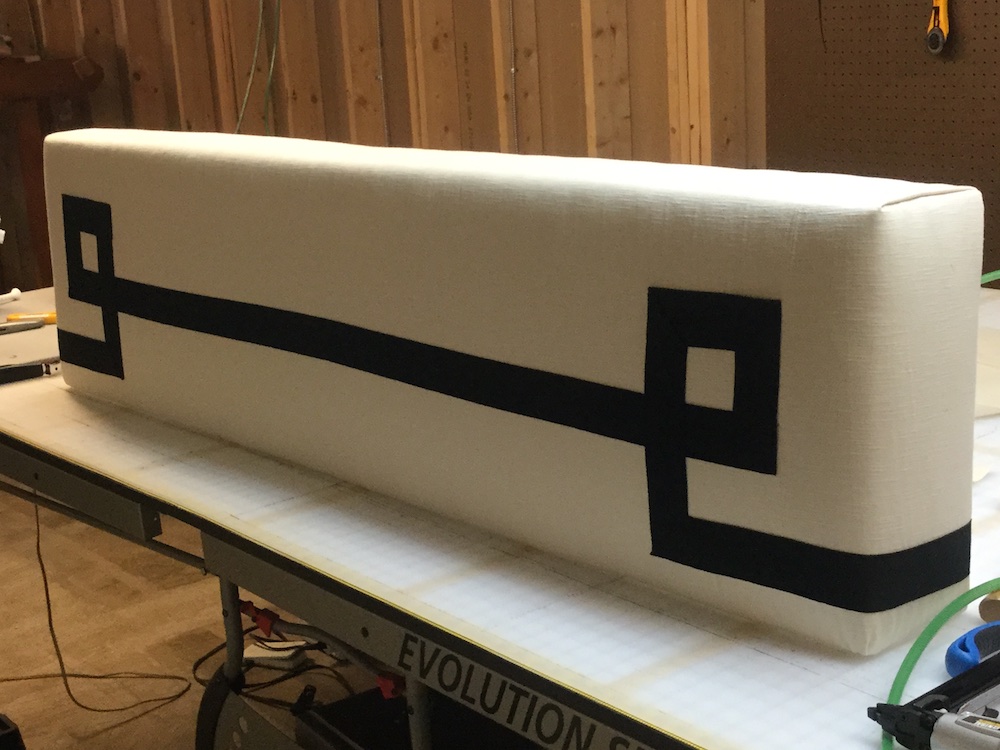
Here’s a bright and sunny photo of the installed drapes and upholstered cornice. The drapes were trimmed with a single stripe of twill tape 2″ from the inside edge. This window treatment added so much interest to this living room.
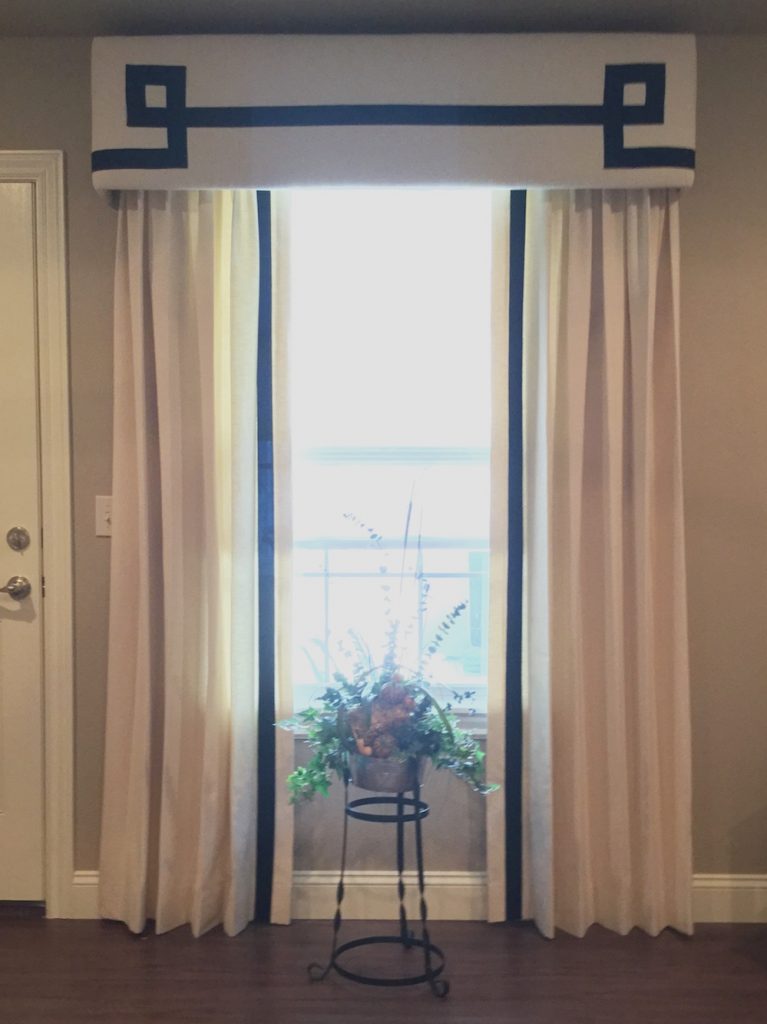
Roman Shades with Greek Key Trim
Roman Shades can also be embellished with tape trim. We made some fun Greek Key Trimmed Roman Shades for the living room of a Springfield home. You may have seen our article about the Dining Room Drapes in the same home. Our client chose the lavender and khaki Greek Key trim and we added it to her cream cotton twill Roman Shades. Here’s a great photo of the Roman Shade during construction.
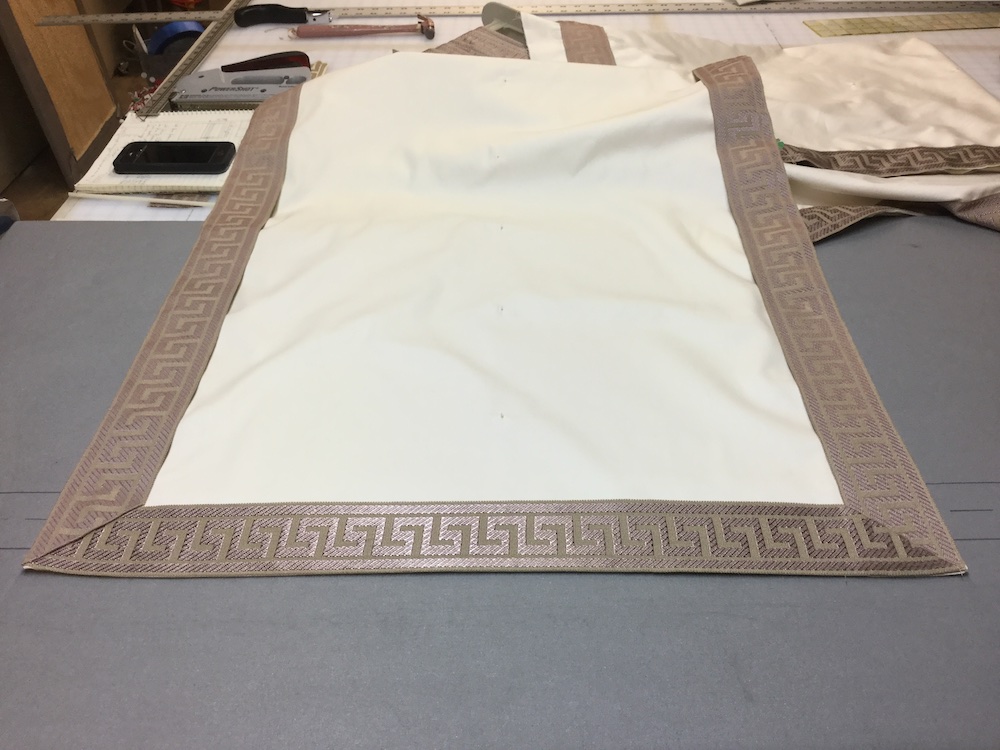
Here’s a photo of one of the installed Roman Shades. We also enjoyed making a variety of patterned pillows and a window box cushion to coordinate with the Roman Shade.
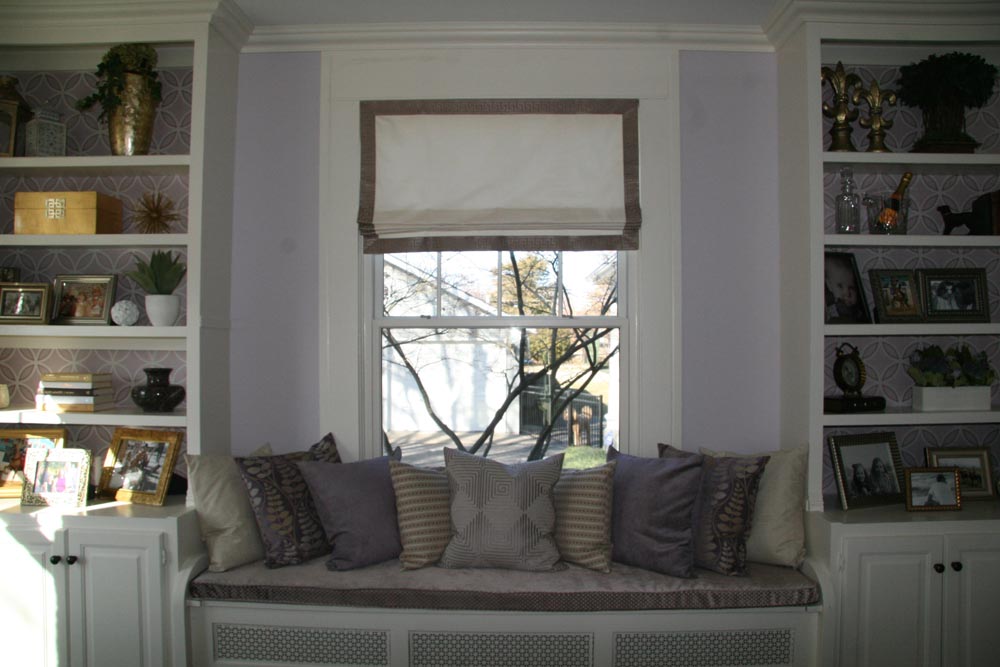
These are just a few of the great uses for tape trim on pillows, Roman Shades, cornices and drapes. We hope we’ve inspired your creativity and helped you think of some trimmed projects for your home.
Contact Us at Bridge. We’d love to help you with your future upholstery and drapery projects.

 417-429-1243
417-429-1243 Info@BridgeUpholsteryAndDrapery.com
Info@BridgeUpholsteryAndDrapery.com